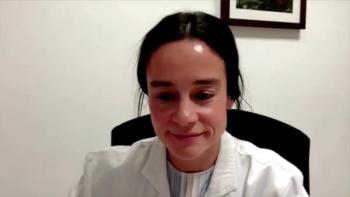
Dr Martin Kolb: Addressing IPF Mortality and Costs Through Timely Intervention
Early intervention for idiopathic pulmonary fibrosis (IPF) is crucial due to the high mortality rate, with emerging therapies like nerandomilast showing potential to reduce health care costs by preventing disease progression.
With a 50% five-year mortality rate,
This transcript has been lightly edited for clarity.
Transcript
What kind of outcomes can be changed based on early intervention for IPF, and what evidence supports the clinical harm of delaying PDE4B therapy following standard antifibrotic treatments?
My answer is usually just knowing that not everyone responds, of course that's true. Knowing that not everyone progresses, that's true as well. But at the time you make a diagnosis of IPF, you essentially give the patient the diagnosis of a disease that you know has a 50% mortality rate of 5 years. So, this is the same impactful diagnosis that you would give a patient with a cancer diagnosis. I always say, "Well, once you give this diagnosis, on average, statistically, this patient will die within 5 years with a 50% likelihood." And that's how you should think about it.
You would not wait for approaching and managing a cancer once it's diagnosed. You would say, "Well, I have to take the best possible chances to stop this cancer from killing that patient in 5 years." Cancer, for one, is more in the minds of people and they understand what it means, so for IPF you still need to educate people.
If you see a lot of patients with IPF, you will see the sad truth that these numbers are real. I mean, it's not a random number, but yes, of course I see patients as well who are still alive after 15 or 20 years, and of course those are lucky people and it's great to see them. So, no one really knows, and obviously no patient is a statistical number. But you just don't know at the time making the diagnosis if a patient will be progressive or will be stable over time. That's how I approach it and that's why I always offer the drugs at the time of diagnosis. This is not an easy discussion to have with a patient.
How do you see the
Any drug that is successful would reduce, overall, the non–drug–related costs of this disease. So, yes, of course these new drugs are all expensive, any new drug for a rare condition is expensive, there's no difference between them. And they are, of course, not neglectable costs. But, if you keep a patient alive for longer, you will of course have savings on other fronts.
I don't think that [lung] transplant is, per se, a big driver for society in terms of cost. It's very big for an individual but for society at large it's not as big. But things like unscheduled admissions to emergency rooms, they are super costly. When a patient with IPF goes to emergency room because of progression, that will easily cost $20,000 to $25,000 depending on where this happens. And those are costs that will be offset to any successful drug. If you can stop this disease, you will have a good impact on society as well with eventual cost savings, but those are of course numbers that we don't see in the health care system.
There are people there to analyze health economic costs and whether it is worth it from a societal perspective, but if a drug like nerandomilast or any other would be successful in stopping the disease, I'm sure that will be a big benefit not only for the people who are affected, but also for society at large.
Newsletter
Stay ahead of policy, cost, and value—subscribe to AJMC for expert insights at the intersection of clinical care and health economics.








































